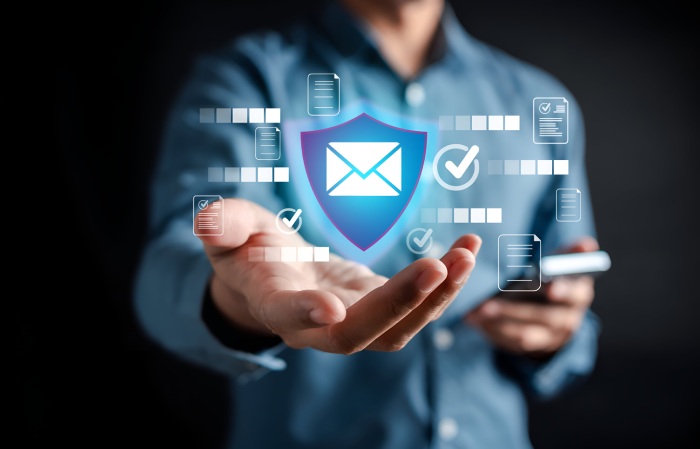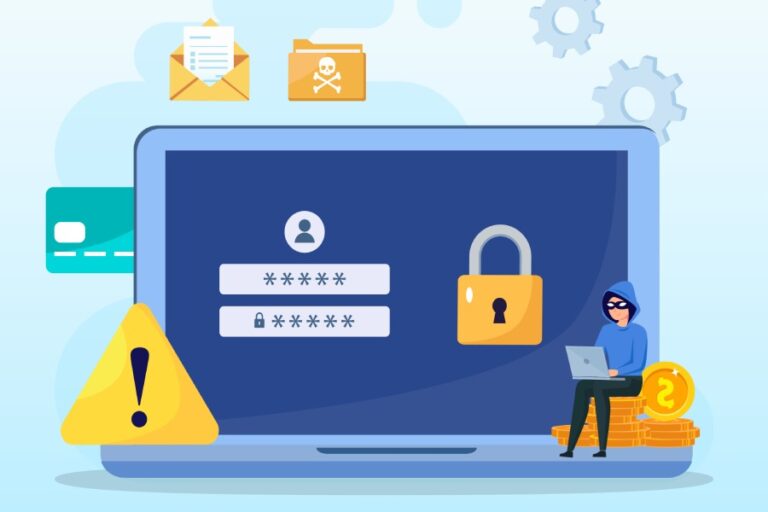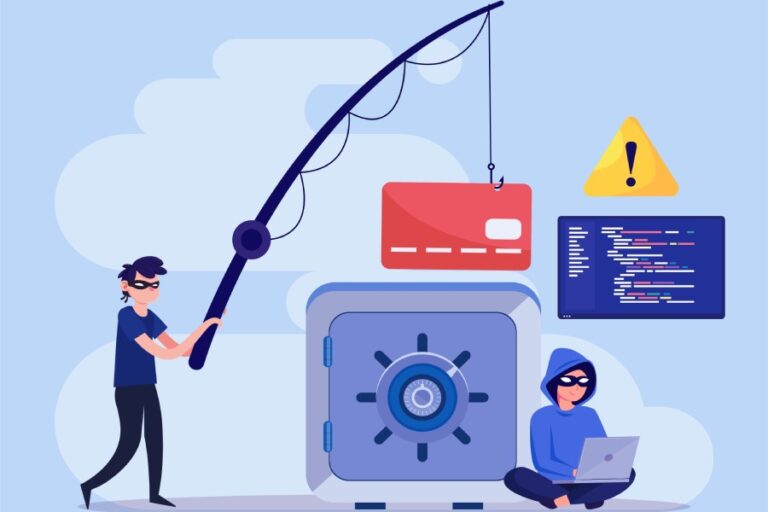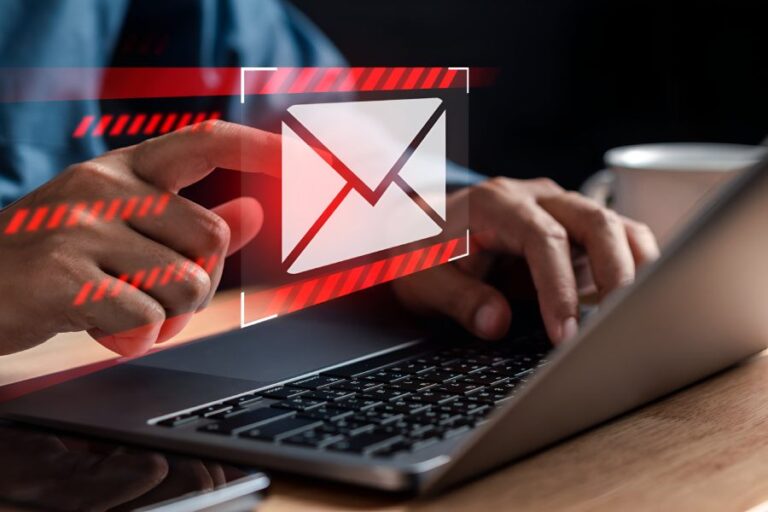The Role of BIMI in the Fight against Email Fraud and Scams
The prevalence of email fraud and scams in the modern digital age has become a growing concern for individuals and organizations alike. This text shares the importance of BIMI (Brand Indicators for Message Identification) in protecting against email fraud and scams, why businesses need to leverage BIMI, and how to set it up correctly.
Using phishing techniques and other malicious tactics by cybercriminals has resulted in millions of dollars in losses, damage to reputation, and personal harm to unsuspecting victims. In this context, the adoption of BIMI (Brand Indicators for Message Identification) has emerged as a promising solution for the fight against email fraud and scams. Let us see how BIMI plays an essential role in the fight against email fraud and scams.
BIMI Explained: What is BIMI and How is BIMI related to Email Authentication

BIMI is slowly becoming an industry standard that enables email receivers to verify the authenticity of incoming messages using a trusted third-party authenticator, such as a DNS (Domain Name System) record. The BIMI verification process provides a visual indicator, such as a logo or icon displayed next to the sender’s name in the email recipient’s inbox.
By leveraging the DNS infrastructure and secure protocols, BIMI provides a safe and reliable method for email receivers to identify trustworthy emails and protect themselves from phishing attacks and other malicious activities.
BIMI helps prevent email fraud by verifying the authenticity of the sender’s domain and displaying a brand logo within the email client. BIMI works by:
- Verifying the sender’s domain ownership through DMARC (Domain-based Message Authentication, Reporting & Conformance) records.
- Publishing a brand logo verified by the email client and displayed next to the sender’s name in the email.
- Protecting against phishing and spoofing attempts by verifying that the sender is authorized to use the brand’s logo and domain.
- By providing a visual representation of a trusted sender and a layer of authentication, BIMI helps email recipients quickly identify and trust legitimate emails, reducing the likelihood of falling victim to email fraud.
Why Do Businesses Need to Leverage BIMI?
BIMI represents a significant advancement for businesses and organizations in their fight against email fraud. Brands need to recognize the power of BIMI in email security as it provides many advantages, some of which are:
1. Decentralized Infrastructure: One of the critical benefits of BIMI is that it operates on a decentralized infrastructure, which reduces the risk of fraud or tampering by malicious actors. Unlike other solutions that rely on centralized authentication authorities, BIMI enables organizations to take ownership of their brand identity and control the information displayed to email recipients, creating a transparent and secure environment where users can trust that the information they receive is authentic and accurate.
2. Brand Recognition: Another advantage of BIMI is that it provides a consistent and standardized way for organizations to identify their brand in emails. By using a verified logo or icon, BIMI enhances the visual impact of emails and makes it easier for recipients to identify and trust messages from known and trusted organizations. Enhancing your emails with your brand logo amplifies the emotions that your subscribers associate with your messages.
Ideally, this emotional response should be positive so that the sight of your logo in their inbox stirs excitement and prompts immediate email opening.
3. Direct Communication: BIMI provides a way for organizations to communicate important information, such as policy updates or security warnings, to their email recipients. By including relevant information in the BIMI record, organizations can ensure that their messages are seen and acted upon by the right people. For example, an organization might use BIMI to communicate a security warning to its employees, and the visual indicator in the inbox would ensure that the message is noticed and acted upon in a timely manner.
4. Email Fraud Protection: Integrating with DMARC, BIMI significantly decreases the risk of fraudulent emails reaching the inbox. Gmail adopted BIMI in 2020, demonstrating the importance of email authentication and its positive impact on recipient trust. BIMI provides a visual assurance that the sender is legitimate, effectively thwarting scammers who seek to hide the source of an email and lure people into clicking on harmful links or giving away their personal information through phishing attacks.
How to Set Up BIMI for your Business to Protect Against Email Fraud and Scams?

To set up a comprehensive BIMI, you will need to follow these steps:
1. Publish a DMARC policy: To use BIMI, you must first have a DMARC policy to verify the authenticity of your domain and ensure that emails sent from it are protected from spoofing and phishing.
2. Create a BIMI record: You will need to create a BIMI record for your domain that includes a reference to a publicly accessible SVG (Scalable Vector Graphics) file that will serve as your brand logo. The logo file should be hosted on a secure server, and the BIMI record should be published in your domain’s DNS records.
3. Verify your Domain and Logo: Once you have published your DMARC policy and BIMI record, you will need to verify your domain and logo to ensure that they meet BIMI standards.
4. Test your BIMI Implementation: After verifying your domain and logo, you should test your BIMI implementation to ensure it is working as intended. You can do this by sending test emails to different clients and checking if the logo is displayed correctly.
5. Monitor your DMARC and BIMI Records: Regular monitoring of your DMARC and BIMI records is essential to ensure that they remain accurate and up-to-date and keep delivering top-of-the-line email protection. You should also monitor your email traffic to detect potential phishing or spoofing attempts and take appropriate action if necessary.
Final Words
Implementing BIMI is a crucial step in the battle against email fraud and scams. BIMI offers a secure and standardized approach to authenticate emails, giving organizations and individuals an effective tool to safeguard against malicious attacks and maintain the trust and security of their communications.
The use of BIMI enhances both email security and marketing efforts and when combined with DMARC, SPF, and DKIM, the implementation of BIMI provides maximum protection and upholds brand reputation. As email continues to be a significant aspect of our digital lives, the adoption of BIMI ensures its future as a safe and dependable mode of communication.







